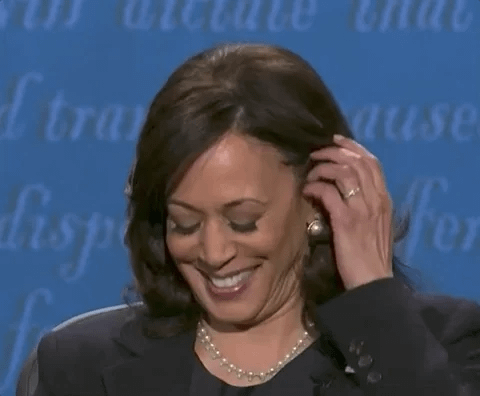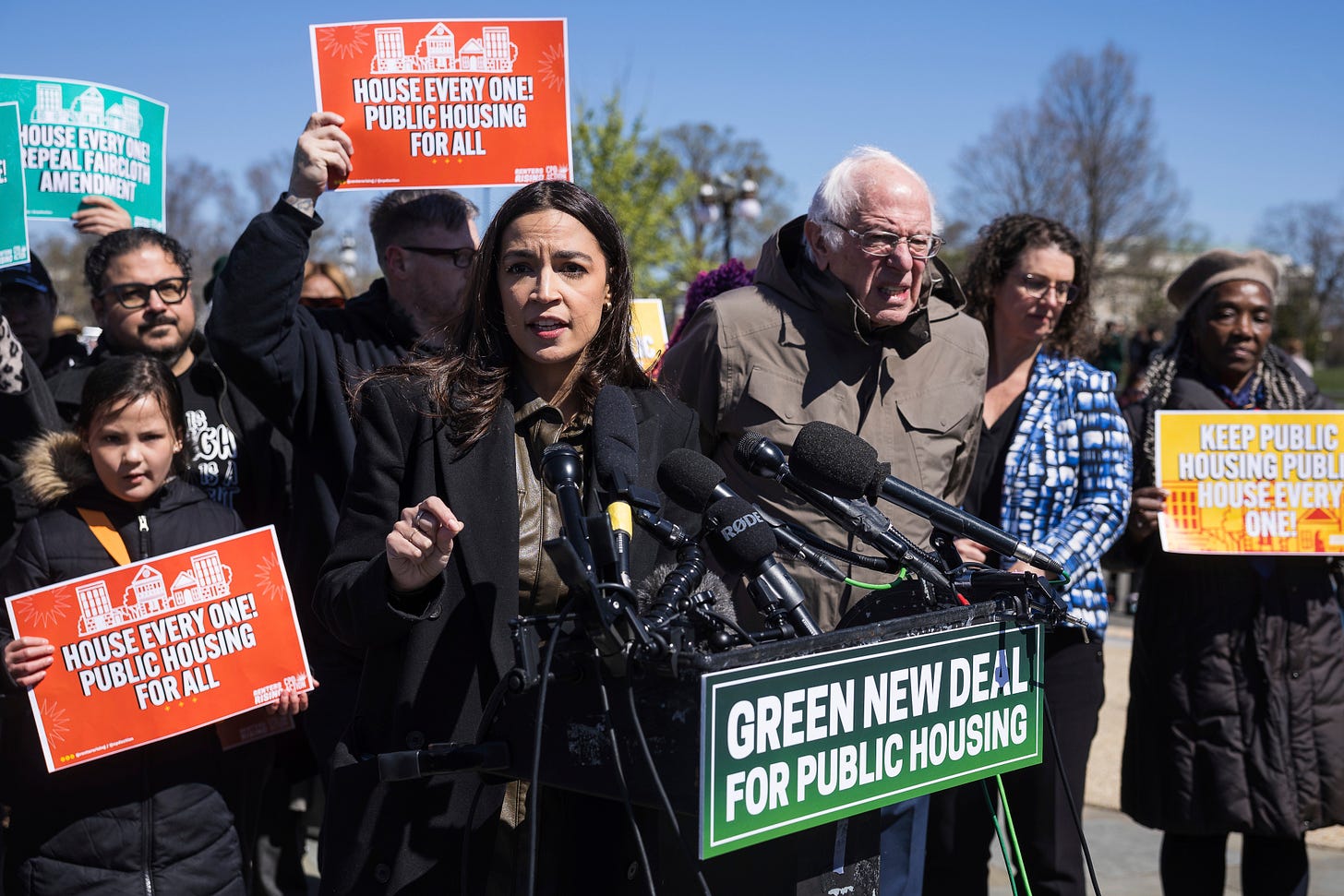Can Kamala Harris and AOC agree on housing?
And can YIMBYs and the shared equity movement get along?
Hey subscribers! This is my one totally free post for the month of September — usually I keep a lot of stuff behind the paywall. I’d honestly prefer to keep all my content free but I can’t figure out how to get people to upgrade except by doing the paywall thing. 🤷🏼♀️ If you love this newsletter and want to keep it going, please do upgrade this week to show your support! Here’s an archive of 50+ pieces and tons of subscriber-only content.
For the past few weeks, the YIMBY community has seemed triumphant. Finally, after years of trying to make housing a topic in national elections, Kamala Harris talked about the urgent need to address the housing crisis in last week’s debate and underscored her plan to build 3 million homes in four years.
In the run up to the debate, Harris produced a 60-second ad, touting her housing plan and reinforcing the importance of homeownership – recounting her mother’s sense of achievement of becoming a homeowner when Kamala was a teenager - and promised a $25,000 assist to first-time homebuyers. Her platform calls for a $20 billion housing innovation fund “to support innovative methods of construction financing, and empower developers and homebuilders to design and build rental and housing solutions that are affordable.” Her plan also calls for the expansion of the Low Income Housing Tax Credit, a program that is responsible for creating 25 percent of multi-family buildings in this country. For these ideas, Harris is being rewarded: YIMBYs for Kamala raised more than $125,000 over a recent Zoom call. As her platform makes clear, YIMBYism is no longer a fringe housing movement — it’s fully the mainstream.
But just yesterday, N.Y. Rep. Alexandria Ocasio-Cortez and Minnesota Sen. Tina Smith introduced the Homes Act to Congress, presenting a different approach to the housing crisis. Per their op-ed in the New York Times, the Homes Act would:
establish a new, federally backed development authority to finance and build homes in big cities and small towns across America. These homes would be built to last by union workers and then turned over to entities that agree to manage them for permanent affordability: public and tribal housing authorities, cooperatives, tenant unions, community land trusts, nonprofits and local governments.
Though not in conflict with YIMBYism, government-led housing is not at the essence of the movement; if anything YIMBYism has been fueled by frustration with the way government has regulated housing.
Given that the Homes Act seems unlikely to pass, the introduction of the Homes Act less than 100 days to the election looks like an attempt to move the conversation about housing affordability away from YIMBY strategies and more toward the ascendant shared equity movement. Is this intended as a direct challenge to the Harris housing vision, or am I just reading that into it?
Shared Equity’s Moment to Shine
I had already been thinking about the rise of the shared equity movement before the Homes Act. Last week, I attended the Kresge Foundation’s 100th anniversary celebration, Our Urban Future, where it was clear that shared equity models for housing – and for community development writ large – are the vogue for the nonprofit sector.
As the community development field has long grappled with gentrification and displacement, old models of investment that stoke demand — not just starchitect designed art museums and destination live-work-play neighborhoods, but even investments in public schools and parks — are nowadays criticized for the way they unevenly benefit residents, lure wealthier newcomers, and encourage speculation. Increasingly shared equity models where wealth is captured and recirculated among locals, such as community land trusts and neighborhood investment trusts, are positioned as the way to address the adverse effects of capitalism.
At the conference, I heard about projects such as Destination Crenshaw, which encompasses a 16-square mile section of South Los Angeles. A stronghold of Black business and culture, Destination Crenshaw is creating the country’s largest Black arts and culture district with an anticipated 100 commissioned works of art, including Kehinde Wiley’s Rumors of War pictured above. Destination Crenshaw’s construction, which encompasses a park, walking paths, and exhibition spaces, has already become a talent pipeline for locals, with a 70 percent local hire rate.
Destination Crenshaw’s executive director, Justin Foster, envisions a community land trust and tax increment financing (TIF) zone. As Destination Crenshaw’s amenities add value to the real estate, and the neighborhood’s light rail stop situated between LAX and downtown brings tourists visiting for the 2026 World Cup and 2028 Olympics, the hope is that the community land trust and TIF will ensure the wealth created in the community stays there.
As other conference speakers such as Mikeya Griffin from Rondo Community Land Trust in Minneapolis and Scott Kratz from the 11th Street Bridge Project / Building Bridges Across the River (which The New Urban Order subscribers visited in 2023) shared, community land trusts like theirs are becoming more commonplace as a new vehicle for economic development. In the case of the 11th Street Bridge, the CLT is part of an equitable development plan, co-created with residents to defy the high potential for gentrification that will come when the Bridge is completed.
While still the minority in terms of community development — I can’t think of any American city with double digits community land trusts, but perhaps I’m wrong — they have already become the aspirational model for many in the field who have seen how hard it is to improve neighborhood housing, amenities, and infrastructure without creating an unhealthy gentrification cycle.
Can Shared Equity and YIMBYism get along?
As much as YIMBYism is finally breaking through to the mainstream, its shortcomings are growing increasingly apparent. This is less the fault of YIMBYism than the fact that housing price appreciation has just gotten so out of control. It’s pretty astounding to realize that the average price of a home is 30 percent more today than it was in 2020. Thirty percent! Sure, not building housing is only going to make things worse, but no realistic amount of housing supply is going to bring prices back down. YIMBYism is still very necessary — particularly to ensure that desirable neighborhoods can accommodate demand — but it’s not going to radically reduce housing prices in the short term.
What makes AOC’s proposal both so appealing, and so unlikely to get passed, is that it is a real break with the old way of doing things.
The authority AOC envisions would require a $30 billion budget – half the cost of currently funding HUD, or as Kriston Capps at Bloomberg smartly notes the same amount we spend on the mortgage interest tax deduction. It would also entail a parallel loan fund. The 1.25 million housing units anticipated to be built by the authority would have their rent pegged to 25 percent of a household’s income, thus preserving affordability.
It would be hard for YIMBYs to argue with the idea of spending $30 billion to increase housing supply – it’s an ideology known for its focus on construction at almost all costs – but AOC’s approach is decidedly not about freeing a latent housing market. This is about learning from the lessons of the past few decades and realizing that markets need a counterweight, and perhaps only government can provide one.
YIMBYism is able to get bipartisan agreement on both left and right because many people across the spectrum agree that government is part of the problem in our housing market. By contrast, here we have government taking the lead, albeit in service of a public-private partnership. (Frankly, it’s a bit more like how big philanthropies work.) Will we see bipartisan agreement that government can be part of the solution? Will the fact that the housing is maintained and run by private sector actors be enough to get the center and right on board with this?
One of the things I like here most is that AOC’s approach begs us to confront some questions about national housing policy that have been festering for too long. Like why do we continue to fund most housing through Low Income Housing Tax Credits? Why do we continue to focus on homeownership even when it’s out of reach of so many Americans? And what is the role of HUD these days anyway?
If this authority reduced the slow, expensive role that LIHTC plays in affordable housing creation, and it forced some greater clarity around our nation’s housing strategy, that would be enough. Getting the Homes Act passed seems like a longshot, but I am 100 percent here for the conversations about it that we will have in the meantime.
You May Also Like:













“ what is the role of HUD these days anyway?” would be a great future topic for a newsletter!
https://www.youtube.com/watch?v=h46WVCr4zk0
Really interesting video about a CLT in Toronto
My main worry with a lot of the shared equity movement type programs (especially CLTs) is that they’ll just become another cudgel of NIMBYism. (Though this time more likely from lower income residents instead of higher income ones).
In effect I worry that if a community directly owns most of its buildings (homes, shops, etc) in such a way that established tenets / businesses have stable rents no matter market conditions then the innate human dislike of change will prevail and the community will end up frozen in time, slowly aging and closed to outsiders.
This might be fine for a lot of communities, but for the places where our housing crisis really exists (downtowns and rapidly gentrifying inner cities with good transit links) these policies would likely exacerbate the problem as they would freeze (often well below required density) neighborhoods in place with no incentive to expand housing supply; similar to the effect of historic preservation districts.